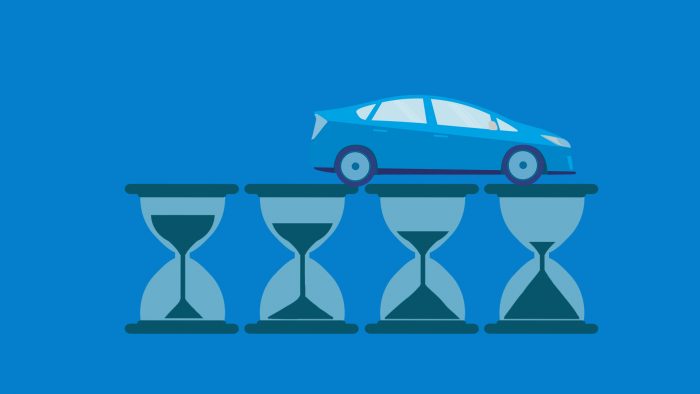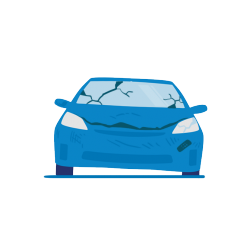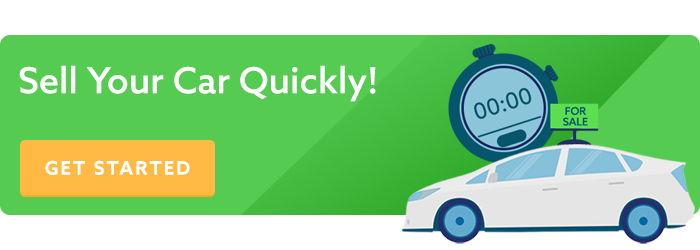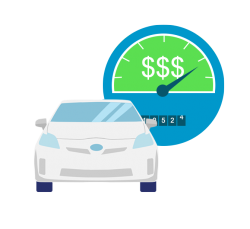At What Age Mileage Is Best to Sell Used Car

The question just about every car owner asks themselves at some point is this: How do I know when it's time to sell my car? There are many different ways to answer this question, and how you answer it for yourself will depend on a variety of different factors, but in this article we'll provide you with answers to the most common questions people ask about selling their car. Read each of the four questions and their answers below and see which one best fits your situation and needs in order to answer the question of how to know if it's time to sell your car.
Should I Sell My Car if It's Old? Short Answer: Probably

If you're wondering when to sell your car and buy a new one, your car's age and condition play the biggest part in answering the question. Is your car clearly past its prime? Maybe you wake up one morning and realize your car is old. But just because it's old doesn't necessarily mean it's time to sell. It still depends on the particulars of your situation and what your goals are concerning car ownership. Here's how to make sense of it all:
If you like not having to make car payments
One reason people decide to keep driving a car whose best years are now only a distant memory is because they like not making those monthly car payments you typically have to make on a newer vehicle. If you think you can get another year out of your old car without having to shell out for major repairs, then by all means keep driving it, but use the additional time to save up a good down payment for your next vehicle, whether it's going to be a brand-new car or just a much newer used vehicle. Just keep in mind that every click of the odometer could be bringing you closer to a big repair bill. If you want to commit to this strategy of continuing to drive your old car in order to save up money for a newer one, it may be worth your while to have a trusted mechanic give it a thorough inspection with an eye towards identifying what major issues will probably come and when. Armed with this knowledge, you'll be able to more clearly identify the window of opportunity you have to keep driving the car while saving money for your next vehicle. Hanging onto the vehicle can also make sense if you're mechanically inclined and can do some of the repair and maintenance work yourself.

If it's costing more to keep it on the road than it's worth
If you feel like you're constantly sinking more money into repairs and maintenance to keep your car running, it's time to find out for sure if it's costing you more to keep the car on the road than it's worth. Here's a 5-step process you can use to figure this out:
Step A. Determine what your car is worth. Are you wondering, how can I make a well-informed decision about whether or not to sell my car? The answer begins with this first step. You have to find out what your car is worth. The most popular and easy way to do this is by going online to Kelly Blue Book Value and/or Edmunds True Market Value. These are sites where you can fill out online forms with information about your vehicle (year, make, model, mileage, condition) and then find out what similar vehicles are selling for in your area. You'll get a sense for what your car is worth in a variety of selling scenarios, including what you could expect to get for it as a trade-in, selling it outright to a dealership, or selling it privately on your own. The key to this process is to be as accurate as possible about the condition of your car because you want your value estimate to be realistic. You can also use Driveo's Common Sense Method for Vehicle Valuation (a proprietary method we use to determine used car values) to know exactly what your car is worth.
Step B. Find out the cost of keeping it on the road. Have your go-to mechanic give you a full run-down of three kinds of upcoming costs: 1) Any big repairs that have to be done right now to keep the car on the road; 2) Other significant repairs that will need to happen over the course of the next year but don't have to be done right now; and 3) Major maintenance (not just oil changes) that will come due over the next year based on the vehicle's mileage – things like major fluid replacements, brakes, tires, timing belt, water pump and so on. Putting off scheduled maintenance increases your risk of a breakdown.
Step C. Initial comparison of cost and value . Add up everything you've come up from Step B and compare it to the value you found in Step A. If the cost is higher than the value, then you're probably better off using the money you'd spend keeping this car on the road to get a newer vehicle. If this initial comparison shows less in costs than value, then take the next steps in this process.
Step D. Examine past repair bills and recalculate costs. Your initial comparison leaned towards keeping the car on the road, but now you want to get even more specific about additional costs of continuing to drive the vehicle. Mechanics can't predict future repairs with 100% accuracy. Keep in mind that the older the car, the more likely it is that things are going to wear out or break. Go to Edmunds.com and read reviews from others who own the same make and model because you'll quickly learn about the kinds of issues they have experienced. Consumer Reports is another good source with its Guide to Car Reliability that can help you see what kinds of problems tend to show up in various makes and models of cars as they age. Also go back through your own repair records and see how much you spent during the past year on non-maintenance repairs. You want to add in these recent repair expenses to your previous cost figure from Step B. If the new figure now outstrips the value figure from Step A, then you're better off selling the car.
What's your gut telling you? Finally, if the figures are too close be clear, take some time to just get a sense of your car in terms of how it feels and how it's running. Be honest with yourself. If you feel like you're driving a car that could fall apart at any moment, trust your instincts and start saving the money that would go towards repairs to get yourself a newer vehicle.
If safety is a priority
Whether it's just you driving your car or you have a family, one of your top concerns with any vehicle should be safety. And this is one thing that has been constantly improving over the years. Depending on how old your car is, you might be missing out on all the latest improved safety features such as advanced airbags, rearview cameras, side airbags, electronic stability control, better brakes and handling, blind spot monitoring, forward collision alerts, automatic parking, lane departure warning systems and more. There's a lot at stake when you drive, and older cars simply can't compare to the latest safety features.
The guidelines presented above are primarily for knowing when to sell your high mileage car. The key is not let yourself be sentimental about your car, which can make you hang onto it longer than you should. But the question of when to sell can also be viewed through the lens of the time of year that's best for selling, which is what we'll cover next.
I Know I Should Sell My Car, but WHEN Should I sell it?

You've probably heard the phrase, timing is everything . People throughout the decades have tried to figure out whether or not there are particular times of the year that is the best time to sell a car. In the final analysis, this is really difficult to pinpoint because there are so many factors to consider, but here are some rules of thumb people have come up with that may or may not apply to your particular situation. Additionally, it always helps to plan in advance when selling your car, since it may take some time.
Use your common sense
If you've got a convertible and you live in a place that has a real winter, that would be a bad time to try and sell it. No one's thinking about buying a convertible in the winter. Then again, if you live in a place like San Diego where the weather is consistently summer-like, this rule of thumb wouldn't apply.
The spring and summer effect
In general, prices for used cars tend to go up in the spring and summer (March through August) and then start falling as you get closer to the holiday season when people are thinking more about spending money on gifts than buying cars. But you also have to figure in shopping for your next car, and you might not want to be shopping for your newer car during the height of the car-buying season.
Fall and winter
Depending on your location, SUVs and 4x4s sell best in the fall and winter months, although in a sunny warm climate like San Diego, it's more a matter of what people want to drive than weather conditions. If SUVs are a popular choice, the time of year you sell is less important.
September and March
For whatever reason, these two months are when a lot of people decide to trade up to a newer model, which means a lot of used cars come into the market at those times, increasing competition significantly. Selling in the month or two before either March or September can mean less competition for you.

Holidays and special occasions
For those who are thinking of buying a used car as a gift for one of their children, the holidays or right around graduation in the late spring are good times to try and tap into that particular market.
Tax refund season
Another thing to keep in mind is that for those who get a substantial tax refund from their state or the IRS, a significant number of those people want to put that money towards getting a car. This timeframe is typically February through April.
The whole issue of trying to time the part of the year that's best for selling your car is tricky because as you can see some of the points made above seem to be in conflict with each other. A more common method for figuring out when to sell your car has to do with how many miles are on it.
Should I Sell My Car Based on Odometer Milestones?

Another strategy some people adhere to is paying attention to the odometer reading of their current vehicle. Have you ever asked yourself, should I sell my car before 100,000 miles? That's just one of several odometer milestones to consider. Here are the specifics of these approaches:
Finding the sweet spot
Earlier in this article we talked about people who love not making a car payment. These are the people who are more likely to keep driving a car until it really starts showing its age. They want to avoid car payments as long as possible and will keep driving their car even if it's rusting out and is held together with duct tape. Then there are those who trade-in their car every few years for a brand-new vehicle because they don't mind always making car payments each month. These are the extreme ends of a spectrum of when to sell your car. What you're better off doing is finding a middle-ground approach that works for you. If your car is old and not in great shape, go back to the process in Question #1 to determine if it's costing you more to keep it on the road than it's worth.
The first nine months
It's a well-known fact that a car is depreciating asset, meaning it's always losing value, not gaining value. But this depreciation does not happen at a constant rate over the life of the car. A new vehicle depreciates more rapidly at the beginning of its life. It is common knowledge that a new car depreciates at least 10% the moment you drive it off the lot, which means it's going to be worth less than what you still owe on it if you took out a car loan to buy it. The car will then depreciate on average another 10% during the first nine months, putting you even further behind. This is obviously not a good time to try and sell your car. And keep in mind that the car will continue to depreciate anywhere from 15-25% each year for the next four years before the rate of depreciation begins to fall.
30,000–40,000 miles
Many cars have warranties that will expire when you reach 36,000 miles or three years (whichever happens first). This will also be when your first major scheduled maintenance is supposed to happen, which could also include brakes and tires if they have experienced enough wear and tear. This would typically still be considered a bad time to sell your car unless your top priorities are always having a brand-new car and never paying for repairs or major maintenance (i.e., you always lease instead of buy). But it rarely makes financial sense. Also keep in mind that if you try to sell the vehicle before it reaches this mileage milestone to avoid doing the service and maintenance, a savvy buyer might figure this out and use it to negotiate a lower price.
60,000–70,000 miles
Depending on the make and model of your car, this might be the mileage milestone where it's time to pay for a significant scheduled maintenance event, which is replacing the timing belt. It will also probably be time for new brakes and tires as well, which can all add up pretty quickly to a sizeable bill. If you want to avoid all those items, you'd want to sell a few thousand miles before getting there.
100,000 miles
For better or worse, most people view 100,000 miles as some kind of magical cut-off. This is because even as recently as 30 years ago, a car that reached this milestone was considered lucky and probably on the verge of reaching the end of its useful life. And it doesn't matter if this doesn't match reality. Automobile technologies have improved so much that lots of cars routinely exceed 100,000 miles without needing significant repairs. But when it comes to selling a car, what potential buyers perceive is the reality you have to deal with, and many people will only consider buying a used car that has less than 100,000 miles on it. If they're searching online, they often enter that as their mileage limit, so if you let your car get above that milestone, lots of people won't even see it in their searches. If you're hoping to get a significant amount of money to put towards your next vehicle, you should consider selling before you hit this mileage milestone, probably when it's still below 95,000 miles.
Beyond 100,000 miles
Prices for used cars with more than 100,000 miles drop significantly and are harder to sell, especially if the interior and exterior are showing signs of wear and tear. Anything you can do to improve the cosmetics of the vehicle will help you sell it faster and for more money.
The odometer milestones listed above are probably the most common way people figure out when it's time to sell their car. But there are few other signs that can also come into play, which are listed below.
What Are Some Other Signs It's Time to Sell My Car?

Besides the age and condition, the time of year, or where you're at in relation to various odometer milestones, there are additional considerations that can tell you it's time to sell your car. Here are a few to keep in mind:
Your needs are changing
There are many life-changing events that can answer the question for you of whether or not it's time to sell your car. Maybe you're starting a family and need a bigger vehicle that is also safer for your children. Maybe you're moving further away from your job and need a vehicle that is more fuel efficient than your current ride for a longer daily commute. Maybe you're moving out to the country and will need a pickup truck for your new rural lifestyle.
Parts are expensive or hard to find
As your car becomes increasingly obsolete compared to newer models, making needed repairs also becomes increasingly difficult. When a car company makes major changes to one of its models, it will inevitably start phasing out the tools and parts that were specific to the outdated models. Even worse, the company that made your car could go out of business entirely, like Saturn did.
You've lost faith in it
If you're getting to the point where you dread the idea of getting in your car because you're afraid it won't start, or don't like to have anyone else in the car because it's feeling increasingly unsafe, trust your feelings and get rid of the car! The vehicle you drive needs to be, above all else, a reliable way to get from point A to point B.
Economic considerations
If the economy is down and gas prices are on the rise, that can signal a good time to sell if you have a fuel-efficient vehicle that will save people money in their daily commute. Likewise, if public transit prices are on the rise, more people will be interested in buying their own vehicle. If the economy is on the upswing, that can be a good time to sell a luxury car or higher-end SUV. In an economy where interest rates are on the rise and qualifying for new-car loans is more difficult, used cars become more attractive to many potential buyers. Also knowing what cars are most in demand in your area can help you decide if the time is right to sell your car.
Conclusion

It's not uncommon for car owners to ask themselves, "How do I know when it's time to sell my car?" We've armed you with the answers to four different ways of asking this question that will help you decide right now if it's time to sell your car. If you determine that the time has come, remember that the easiest way to get the best combination of a great price and a fast selling process is to sell your car to Driveo. Learn just how easy it can be to sell your car to Driveo, and go ahead and get a rapid online quote in minutes that will be good for 30 days. You'll love how easy it is to cruise in and cash out at Driveo!
At What Age Mileage Is Best to Sell Used Car
Source: https://www.driveo.com/blog/time-to-sell-my-car/